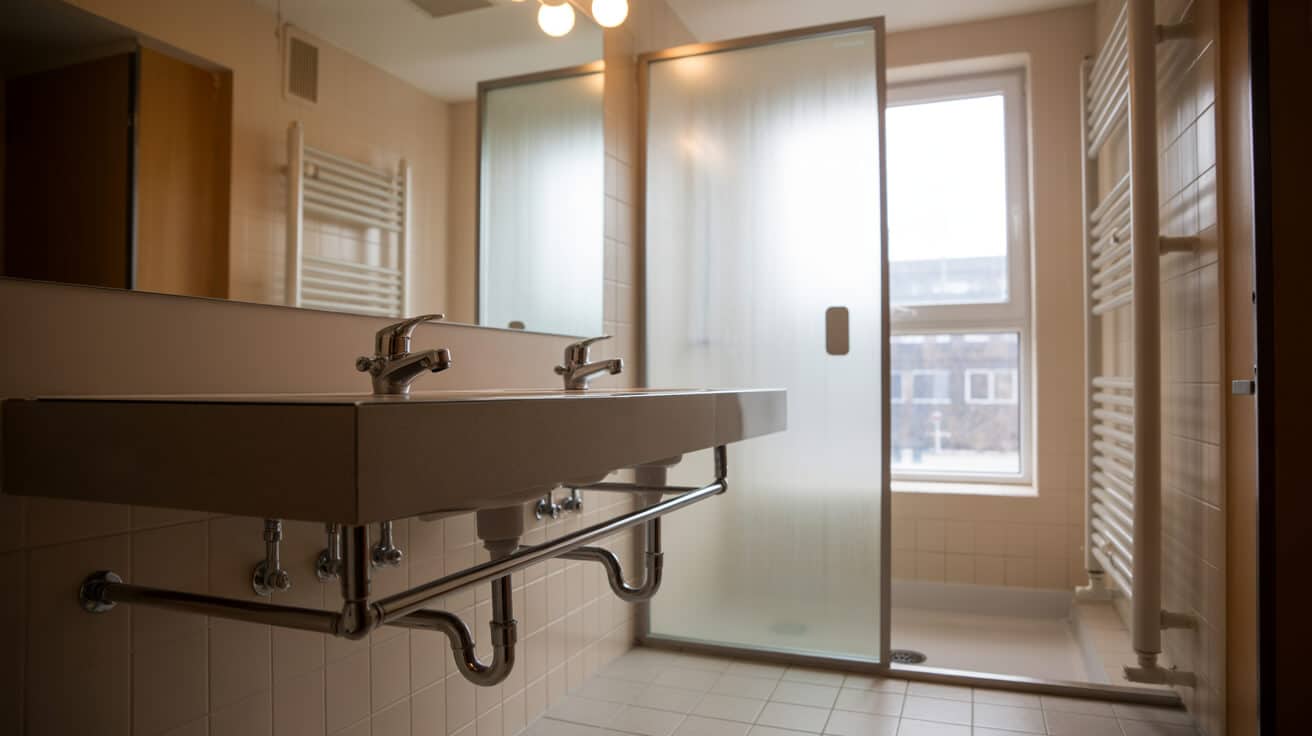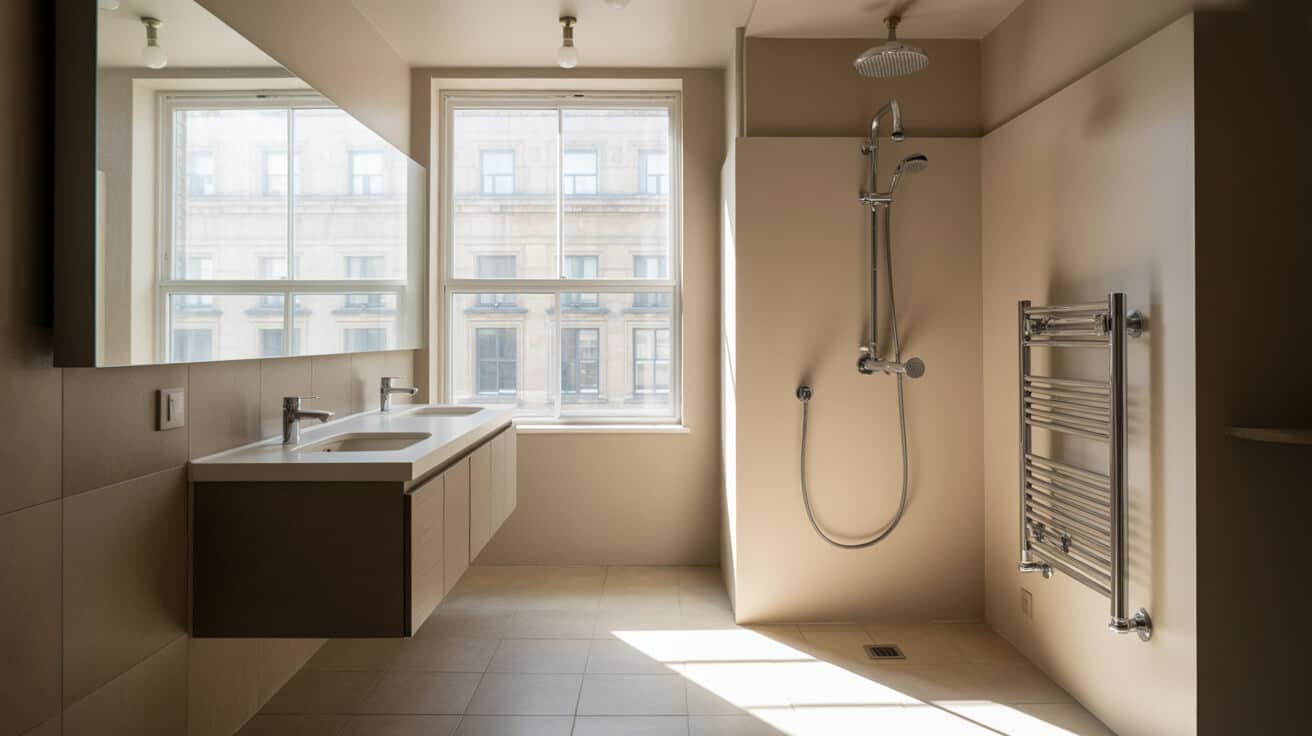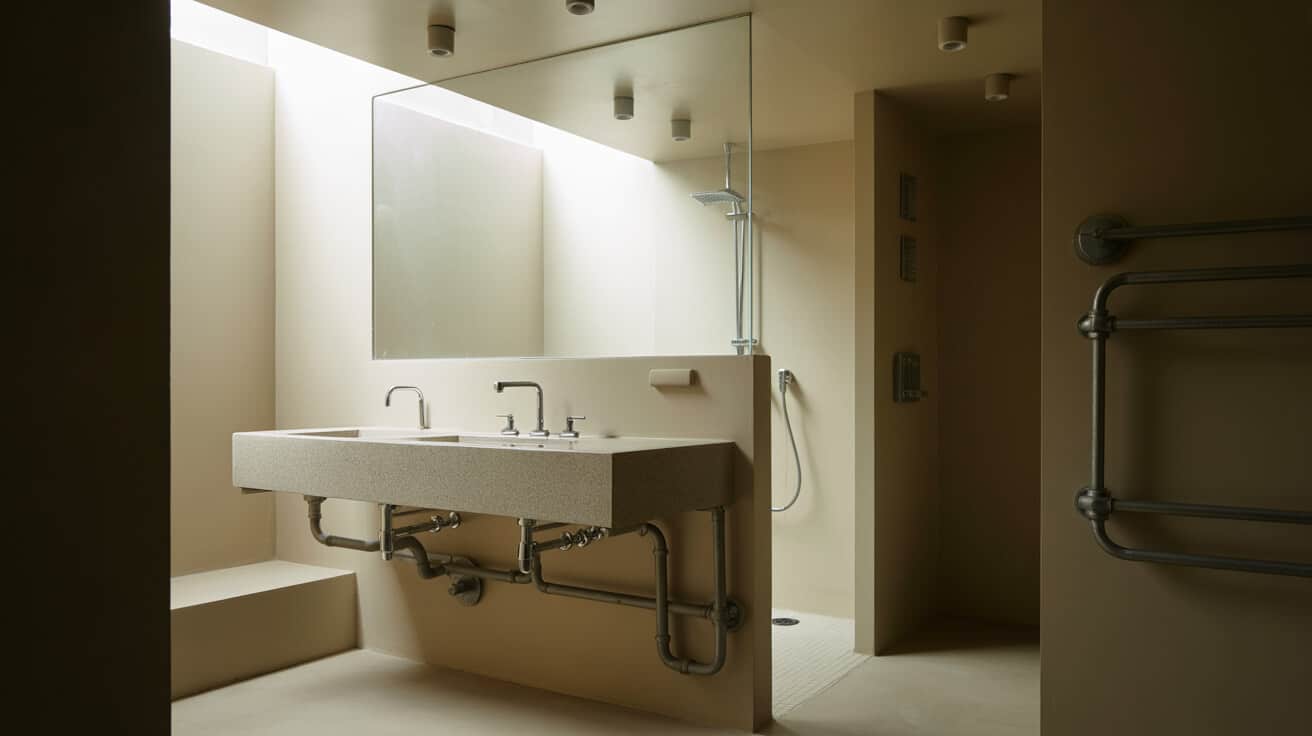Reliable plumbing services underpin hygiene, comfort, and regulatory compliance in student residences, ensuring the uninterrupted delivery of potable water, swift removal of wastewater, secure hot water supply, system resilience, and the ability to address emergencies. The multifaceted nature of student accommodation plumbing necessitates close communication among building owners, facilities managers, service contractors, and residents across a range of social and operational contexts.
Student accommodation plumbing is defined by the interplay of technical systems, operational risk management, and compliance structures supporting the collective living needs of higher education students. Systems are engineered to address variable demand, shared usage patterns, and stringent safety standards, all within properties that may range from historical halls of residence to modern private blocks.
The coordinated deployment of water supply, drainage, hot water storage, appliance integration, and responsive maintenance ensures that both routine convenience and crisis resilience are maintained throughout the academic year. These demands are heightened by legislative requirements, rapid turnover of residents, and the intensity of peak usage periods. Plumbing and heating companies, including trusted specialists such as Plumbers 4U, deliver critical expertise, inspection, repair, and compliance documentation, ensuring robust asset management and reliable residential experience for students and property owners.
Etymology or name origin
The phrase “student accommodation plumbing” combines both sector-specific and widely recognised terminology, reflecting the evolution and institutionalisation of building services for collective living environments. “Plumbing”, rooted in the Latin word plumbum for lead, alludes to the historic use of lead pipes, displaced in the modern era by copper, PEX (cross-linked polyethylene), and MDPE (medium-density polyethylene). The expression “unvented cylinder” describes a pressurised hot water vessel, an innovation permitted by regulatory changes enacted under UK G3 guidelines, allowing direct connection to the mains and requiring certified installation for safety.
“Legionella” references a waterborne bacterium responsible for Legionnaires’ disease, with the control and risk assessment of such bacteria becoming a regulatory focus under ACoP L8 (Approved Code of Practice guidance from the Health and Safety Executive). Acronyms including WRAS (Water Regulations Advisory Scheme) and WaterSafe have gained widespread currency within the compliance and property services sector, denoting materials, products, and people accredited to specific standards of installation quality and safety.
Overview / context
Student accommodation property typologies
Student accommodation spans a spectrum of built environments, each demanding tailored design, compliance, and operational strategies. The four main archetypes are:
- Halls of residence: – University-owned complexes offering centralised amenities, often with communal bathrooms and kitchens.
- Purpose-built student accommodation (PBSA): – Privately or institutionally managed buildings with en-suite facilities and shared social infrastructure.
- Houses in multiple occupation (HMOs): – Converted houses or flats licenced for multi-user occupancy, typically requiring enhanced safety protocols.
- University-managed flats or apartments: – Smaller units with partial communal provisioning, sometimes embedded within general residential stock.
Each format shapes required plumbing system density, layout, and service approach, particularly around bathroom/kitchen distribution, the flow of supply, and access for maintenance.
Domain segmentation
Within these properties, plumbing is responsible for managing interconnected systems, including:
- Cold water supply: – Distribution from mains to outlets, storage tanks if present, and pressure management.
- Hot water generation and distribution: – Plant room-based or localised systems, often integrating with the building’s heating network.
- Drainage and waste removal: – Gravity or pump-based systems to manage contaminant expulsion, blockages, and odour control.
- Fixture integration: – Sinks, showers, toilets, dishwashers, and laundry appliances adapted to multiple simultaneous users.
- Heating connection: – Shared or independent circuitry integrating with radiators, TRVs (thermostatic radiator valves), and underfloor heating systems.
Operational imperatives
These communal contexts intensify the need for peak demand handling, preventive maintenance, responsive repair, and compliance documentation. Frequent tenant turnover and the cyclical rhythm of academic years demand robust transfer protocols, inspection cycles, and communication practices between managers, service providers, and occupying students.
History
Origins
Formalised student accommodation developed alongside the expansion of higher education, with early dormitories offering little separation between potable supply and waste removal, focusing on collective needs within monastic or collegiate contexts. Water sources were often communal wells or simple cisterns, with sanitation provided via shared facilities or rudimentary cesspits.
Industrial emergence
Modern piped infrastructure emerged in the twentieth century, as government-funded campus construction and the massification of university attendance necessitated more advanced water and sanitation networks. Regulatory interventions began to structure system design, such as mandated minimum fixtures per student, the prohibition of certain materials, and basic hot water provision, often via vented cylinders and gravity-fed tanks.
Contemporary evolution
The late twentieth and early twenty-first centuries saw an influx of private investment and innovation in student housing, catalysed by increasing demand and property market reforms. Standards rose with technological advances: unvented hot water cylinders became common, subject to rigorous G3 certification; WRAS and WaterSafe schemes codified new expectations for materials and workmanship; risk management practices were institutionalised under ACoP L8 and enhanced reporting requirements. The rise of PBSA introduced hotel-like amenities, en-suite bathrooms, and a trend towards digital maintenance documentation and rapid response contracting.

Concept / description
Plumbing infrastructure in student accommodation constitutes an integrated suite of engineered networks, fixtures, and control apparatus. Key features include:
Core components
- Pipework: – Mains and branch supply lines, typically copper, PEX, or MDPE, sized to manage simultaneous multi-user use.
- Distribution manifolds: – Nodes organising flows to ensure pressure balancing and zoning for maintenance or emergency isolation.
- Hot water storage: – Vented or unvented cylinders in plant rooms or individual units, with TMV (thermostatic mixing valve) installations to prevent scalding.
- Appliance interface: – Supply, drain, and vent connections for sinks, showers, WCs, dishwashers, and washing machines.
- Drainage stack and branch layouts: – Soil pipes, anti-syphon traps, vented stacks, and FOG separation equipment to prevent contamination or backflow.
Safety and hygiene apparatus
- Temperature-pressure relief valves (TPRV): – Safety features on hot water storage to prevent catastrophic rupture.
- Expansion vessels: – Manage pressure fluctuations in unvented systems.
- Backflow preventers: – WRAS-compliant valves ensure water supply integrity.
- Monitoring and control: – Accessible shut-offs, leak indicators, and system labelling for rapid incident management.
Design blends resilience for periods of peak load (e.g., mornings, term arrivals) and efficiency for low-demand phases, supported by preventive maintenance access and zoning for selective system shutdowns to minimise disruption.
Functionality / purpose / applications
Student accommodation plumbing delivers on several key requirements:
Hygienic potable supply
- Ensures access to clean, safe water for drinking, cleaning, and cooking across all user groups, with redundancy and pressure controls to maintain delivery during spikes.
Efficient wastewater removal
- Channelizes effluent from multiple, staggered fixtures, integrating blockages and odour prevention through correct gradient, diameter, and ventilation in soil and waste stacks.
Reliable hot water and heating
- Facilitates the supply of hot water for showers, kitchens, and laundry, synchronising delivery with heating circuits and presence of high-demand instrumentation (e.g., thermostatic valves, recirculation systems).
Emergency resilience
- Supports property management and service provider response with distributed isolation points, clear asset tagging, and rapid-drain capabilities, minimising harm and restoring function efficiently.
Compliance and insurance coverage
- Integrates G3 requirements (unvented systems), ACoP L8 management for legionella, and complete documentation for water regulations and insurance mandates.
User interface and empowerment
- Empowers your organisation or company to inform students about fixture use, emergency protocols, hygiene maintenance, and problem reporting, reducing misuse and enhancing system durability.
Classifications / types / variants
Student accommodation plumbing can be grouped by system type, spatial layout, and amenity level:
Hot water systems
- *Vented cylinders* – Traditional models with header tanks, now less common due to storage and pressure limitations.
- *Unvented cylinders* – Mains pressure, greater user comfort, G3-certified, often plant room-based for PBSA.
- *instantaneous water heaters* – Used in small flats or as backups, energy-efficient, lower volume.
Bathroom and kitchen layouts
- *En-suite cells* – Each room fitted with self-contained amenities, higher system density.
- *Communal* – Shared blocks per floor or unit, infrastructure simplified but increasing cleaning/usage coordination needs.
- *Accessible/Document M* – Special adaptations for mobility, visual, or dexterity-impaired users.
Distribution and control technologies
- *Traditional copper* vs *modern plastics* – Affecting installation speed, longevity, and cost.
- *Mechanical vs smart valves* – Basic vs adaptive control for pressure, flow, or isolation.
Heating and energy
- panel radiators, underfloor heating, and district energy interfaces, individually or in combination.
Systems / tools / methodologies
Methodological approaches
- Preventive inspection: – Scheduled checks (legionella, TPRV, asset audit) minimise downtime and regulatory risk.
- Reactive repairs: – Callout workflows for leaks, floods, blockages, or heating failures. Rapid diagnosis supported by asset logs and system maps.
- Planned servicing: – Annual contracts, often bundled with compliance updates and full-system checks.
Core tools and equipment
- Pressure gauges and flow metres: – For real-time system health assessment.
- Leak and thermal imagers: – Identifies hidden issues without invasive inspection.
- Descaling and flush rigs: – Maintains water quality and system performance.
- Drain rods, vacuum pumps, camera snakes: – Address blockages, foreign object retrieval, and system auditing.
Documentation and logging
- Real-time digital/physical service records, tagging, user reporting interfaces, and compliance report generation are standard with professional providers such as Plumbers 4U.

Stakeholders / entities involved
| Stakeholder | Role & Focus | Interaction Point |
|---|---|---|
| Student Residents | Use fixtures, report faults, responsible for minor care | Daily user, feedback channel |
| Property Managers | Oversee compliance, schedule maintenance, handle risk | Coordination, oversight |
| Facilities Directors | Strategic decision and upgrade planning | Asset optimization |
| Landlords/Owners | Risk, asset and regulatory responsibility | Approvals, funding |
| Contractors (Plumbers 4U) | Technical execution, documentation, emergency response | Scheduled/urgent works |
| Regulatory Authorities | Enforcement, audit, advice | Periodic inspection |
| Cleaning/Maintenance Staff | Report problems, daily hygiene and minor maintenance | Early warning layer |
Your company’s success in student accommodation relies on effective communication, feedback loops, and timely, professional service at every stage.
Legal / regulatory / ethical considerations
Core UK regulatory pillars
- Building Regulations:
- Part G: Sanitation, hot water safety—per occupant, safety mixing.
- Part H: Drainage, waste disposal, gradients, manhole access.
- Part L: Conservation of fuel and power, insulation standards.
- Part M: Access, inclusive design, and adaptable amenities.
- Part P: Electrical safety as impacts water-handling appliances.
- Safety legislation:
- Gas Safety (Installation and Use): Annual CP12 certificates, flue and appliance checks.
- WRAS: Materials, appliances, and fitting approvals for water integrity.
- WaterSafe: Certified contractor schemes—your supplier selection priority.
- G3: Unvented system installation, maintenance, and repair—installer certification.
- ACoP L8: Legionella control, water temperature monitoring, and flushing regimes.
Documentation and insurance
- Certificates: (G3, CP12, Legionella Risk Assessment, WRAS).
- Maintenance logs: required for compliance inspection and insurance.
- Ethical considerations: Duty of care for residents (especially disabled/international students), data security regarding resident and property records, and equitable response/upgrade planning.
Companies like Plumbers 4U support you in fulfilling these requirements through legally sound installation processes and best-practice documentation.
Performance metrics / data / measurements
Key operational measurements
- Repair and downtime frequency: – Incidence rates tracked over time
- Audit and inspection pass rates: – Regulatory compliance records
- Water and energy efficiency indices: – Leak, inefficiency, and consumption overlays
- Tenant satisfaction surveys: – Feedback linked to hygiene, comfort, and safety outcomes
- Response and resolution times: – benchmarking routine, urgent, and escalation cases
Performance table
| Metric | Measurement Interval | Target Standard |
|---|---|---|
| Leak Repairs | Per incident | <2 hours response typical |
| Scheduled Inspections | Quarterly/Annual | 100% coverage |
| Compliance Certification | Annual/On change | No lapsed certificates allowed |
| Water Quality | Monthly | Within UK/EU safety limits |
| Hygiene Audit | Per term/survey | >95% positive indicators |
Data-driven processes, especially when maintained by your company with expert providers, enable systematic refinement and rapid improvement in property service quality.
Challenges / barriers / limitations
Plumbing in student accommodation environments presents several intersecting difficulties:
Technical constraints
- Ageing or nonstandard infrastructure, especially in converted or listed buildings.
- Limited redundancy and pressure imbalance during peak demand cycles.
- Detection difficulties for concealed leaks, corrosion, and pipe scaling.
Social and operational barriers
- High turnover and low personal responsibility among residents, increasing misuse or delayed reporting.
- Access constraints for inspection during occupied periods.
- Communication breakdowns between stakeholders leading to longer service outages.
Compliance and resourcing
- Evolving or overlapping regulatory requirements.
- Financial pressures to balance preventive investment with operational expenditure.
- Service contractor availability—especially for time-sensitive emergency response or specialised works.
Special complexity in legacy stock
Properties that have undergone incremental upgrade rather than full renovation can present a patchwork of standards, requiring bespoke risk, maintenance, and compliance strategies.
Impact / influence / legacy
Decisions made in the specification, instalment, and management of plumbing and heating systems in student accommodation generate impacts at multiple scales:
Resident experience
- Enhanced hygiene, personal safety, and convenience foster positive learning and social environments.
- Clear communication reduces anxiety in crisis moments and encourages efficient maintenance reporting.
Operator and property owner outcomes
- Well-maintained systems prevent major claims, reduce downtime, and may enhance yield via improved tenant satisfaction.
- High compliance establishes reputation benefit and institutional security.
Industry and urban context
- Innovation in materials, system design, and customer engagement cascades across the property and services sector, with broader lessons for urban sustainability and public health policy.
- Failures, conversely, may catalyse sector-wide reviews or even legislative reform.
Robust management support from specialist firms such as Plumbers 4U actively shapes legacy through quality craftsmanship, adaptation to change, and record of regulatory engagement.
Future directions, cultural relevance, and design discourse
The rapid evolution of higher education, property investment, and urban planning continues to challenge and inspire new thinking in student accommodation plumbing:
- Sustainability by design: – The integration of low-flow fixtures, heat-recovery, and renewable compatibility is increasingly standard in new builds, aligned with MEES and net zero targets.
- Universal accessibility and inclusion: – Greater acceptance of universal design principles ensures that future accommodation will provide equitable access regardless of ability.
- Digital transformation: – Data-driven maintenance schedules and digital reporting platforms empower your company or property team with actionable insight, accelerating both compliance and service improvement.
- Behaviour change and education: – Resident engagement through onboarding, signage, and digital education reduces both misuse and crisis risk.
- Cultural and public health discourse: – Plumbing infrastructure for communal living is central to wider societal conversations about hygiene, energy, communal responsibility, and standards for collective wellbeing. Adaptive, resilient, and student-centric systems will help define the future of campus life in your organisation and beyond.

